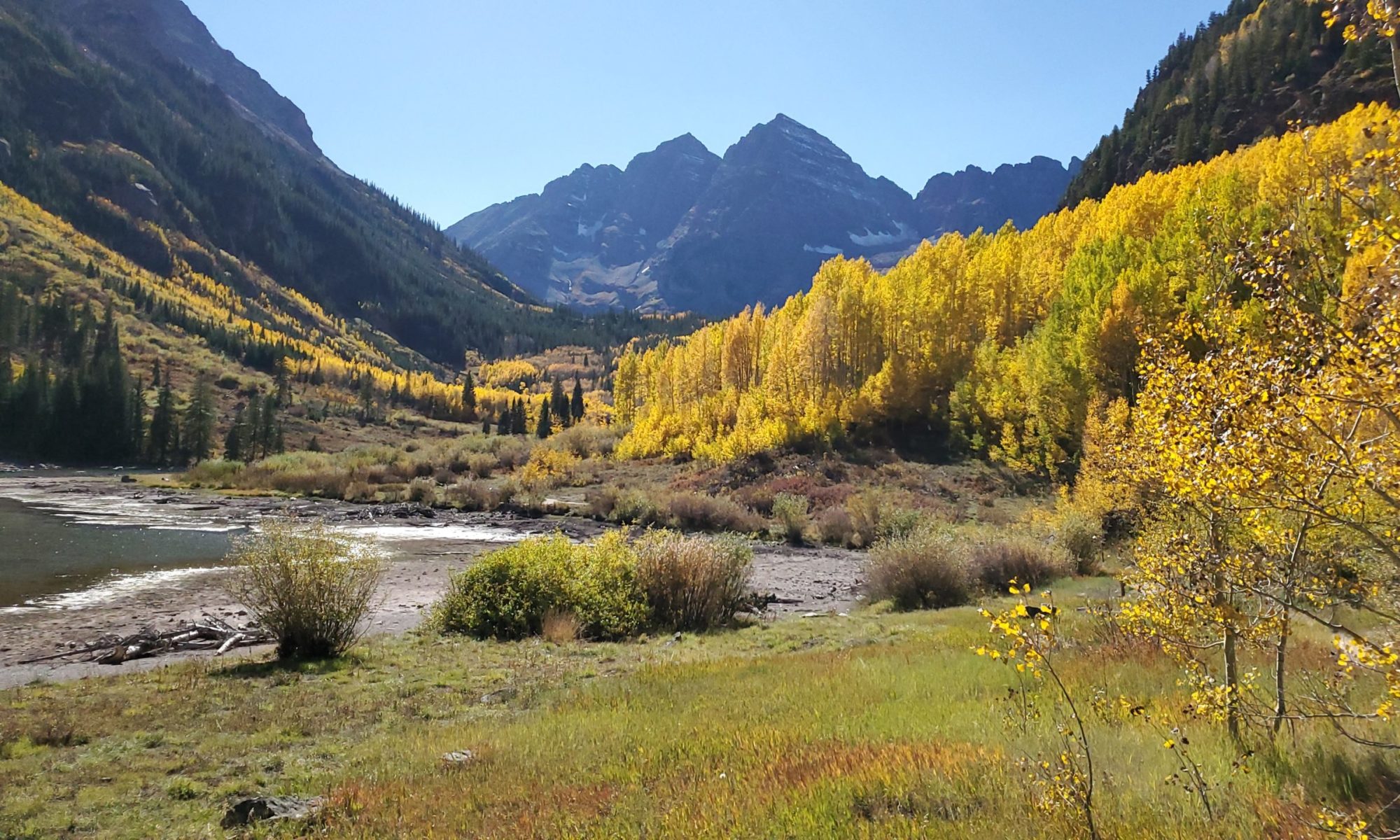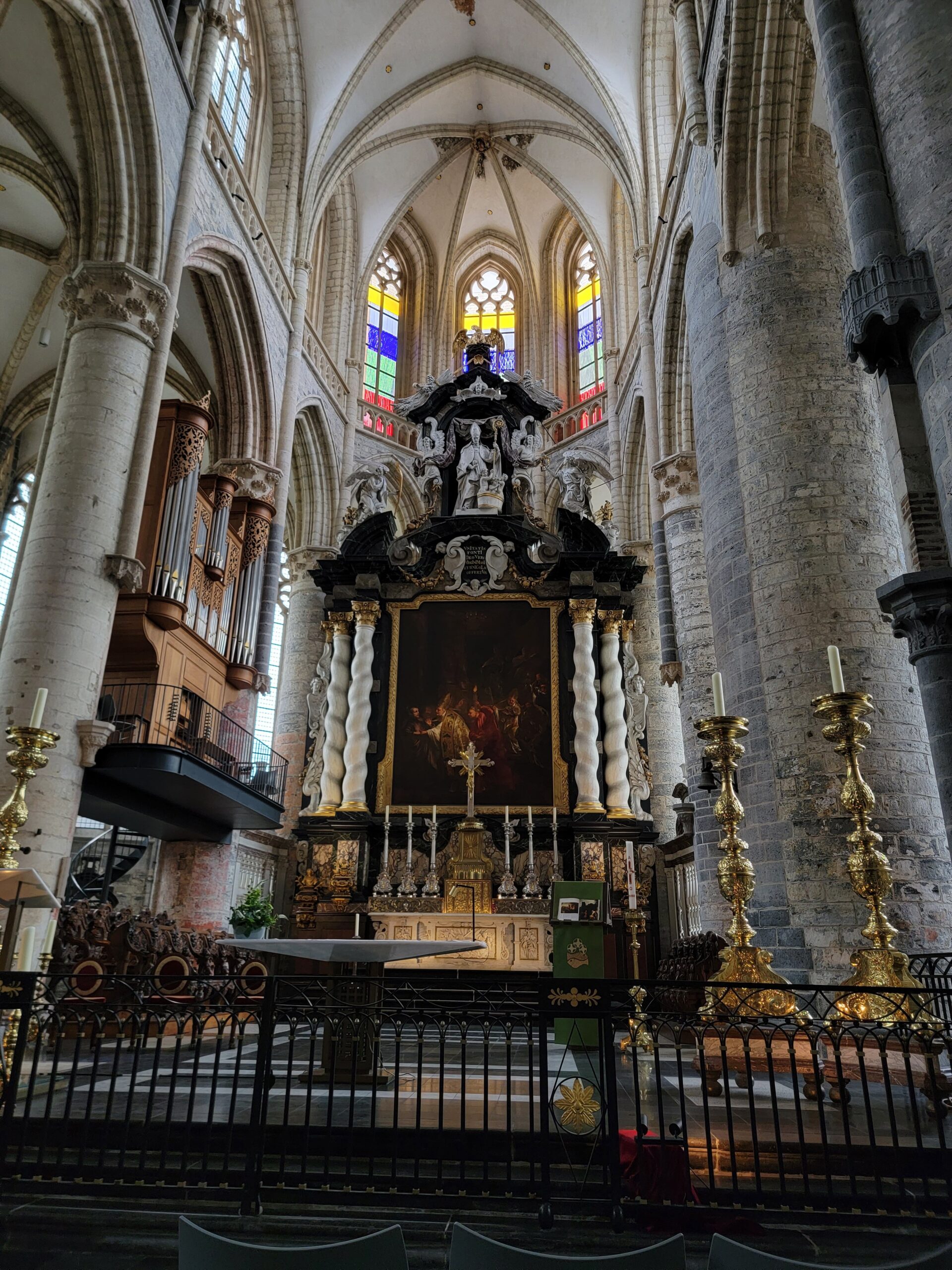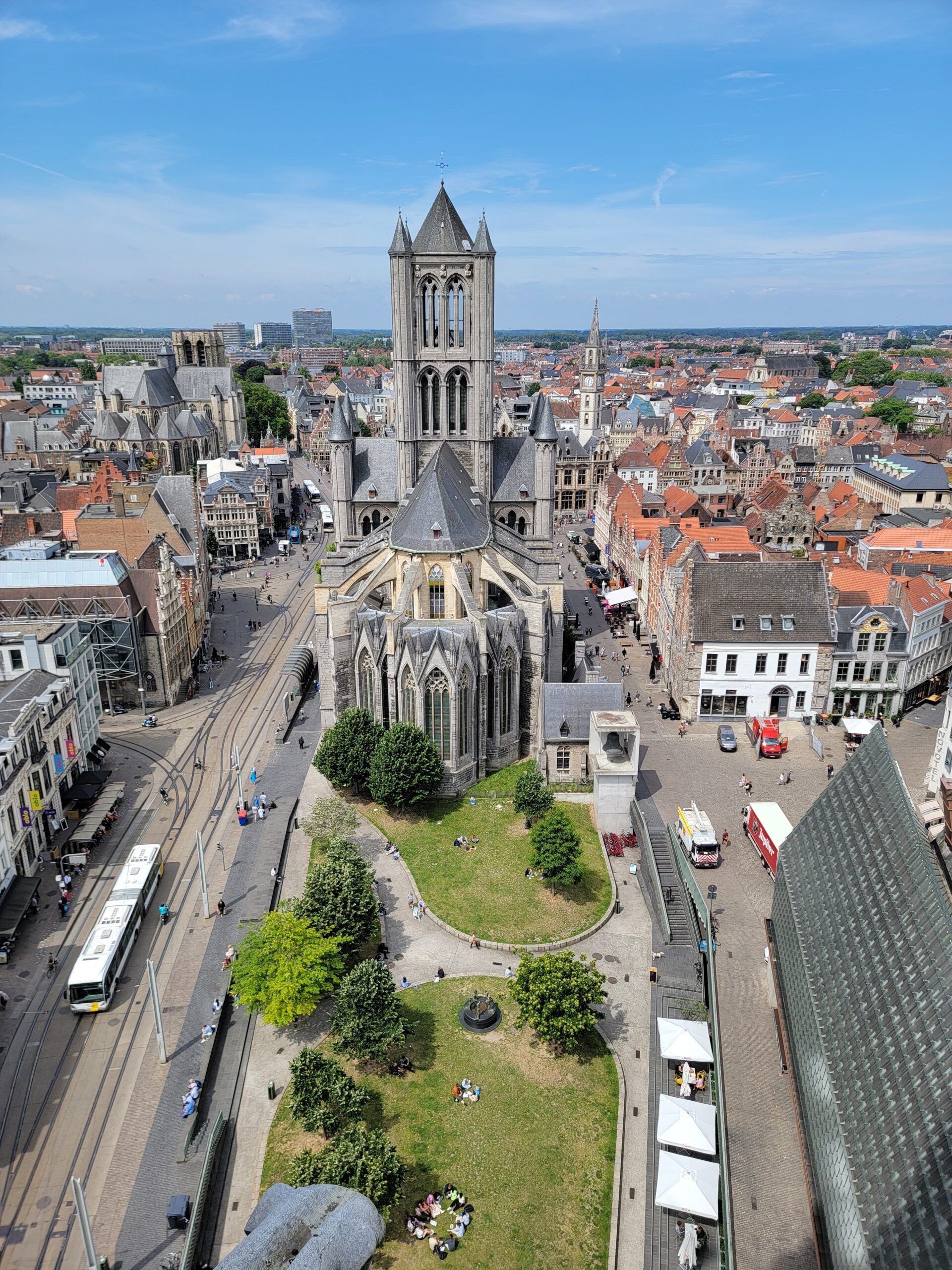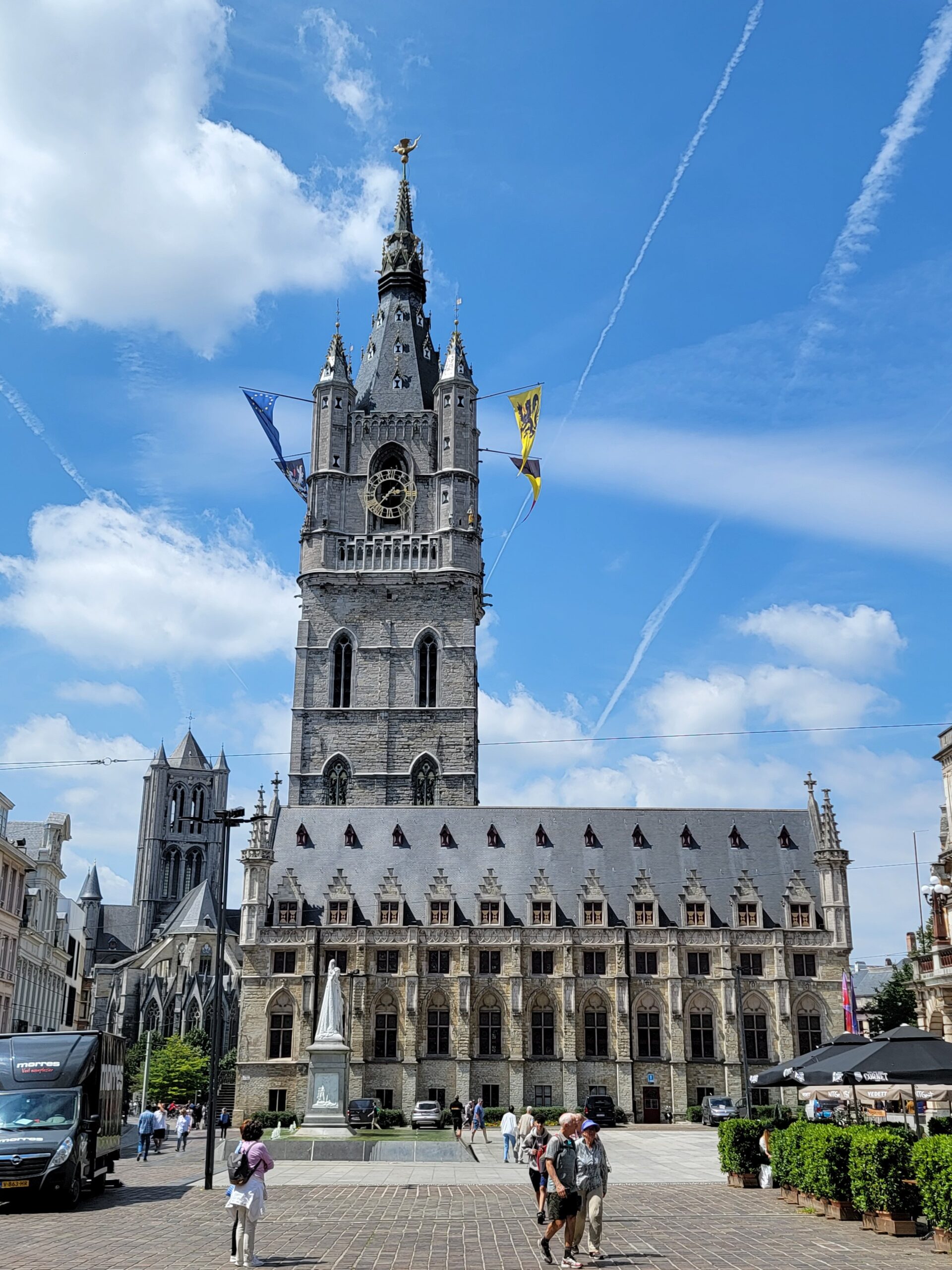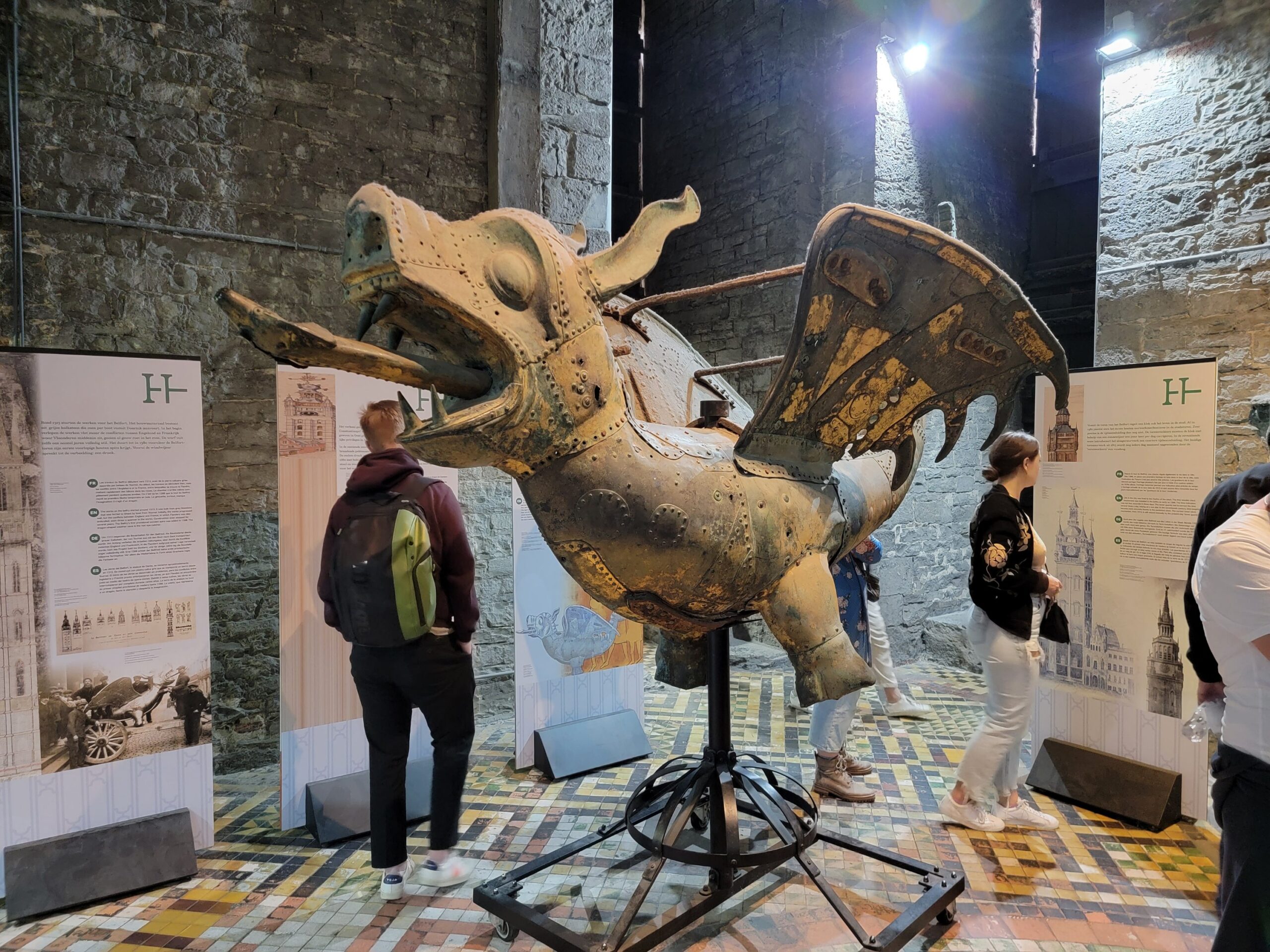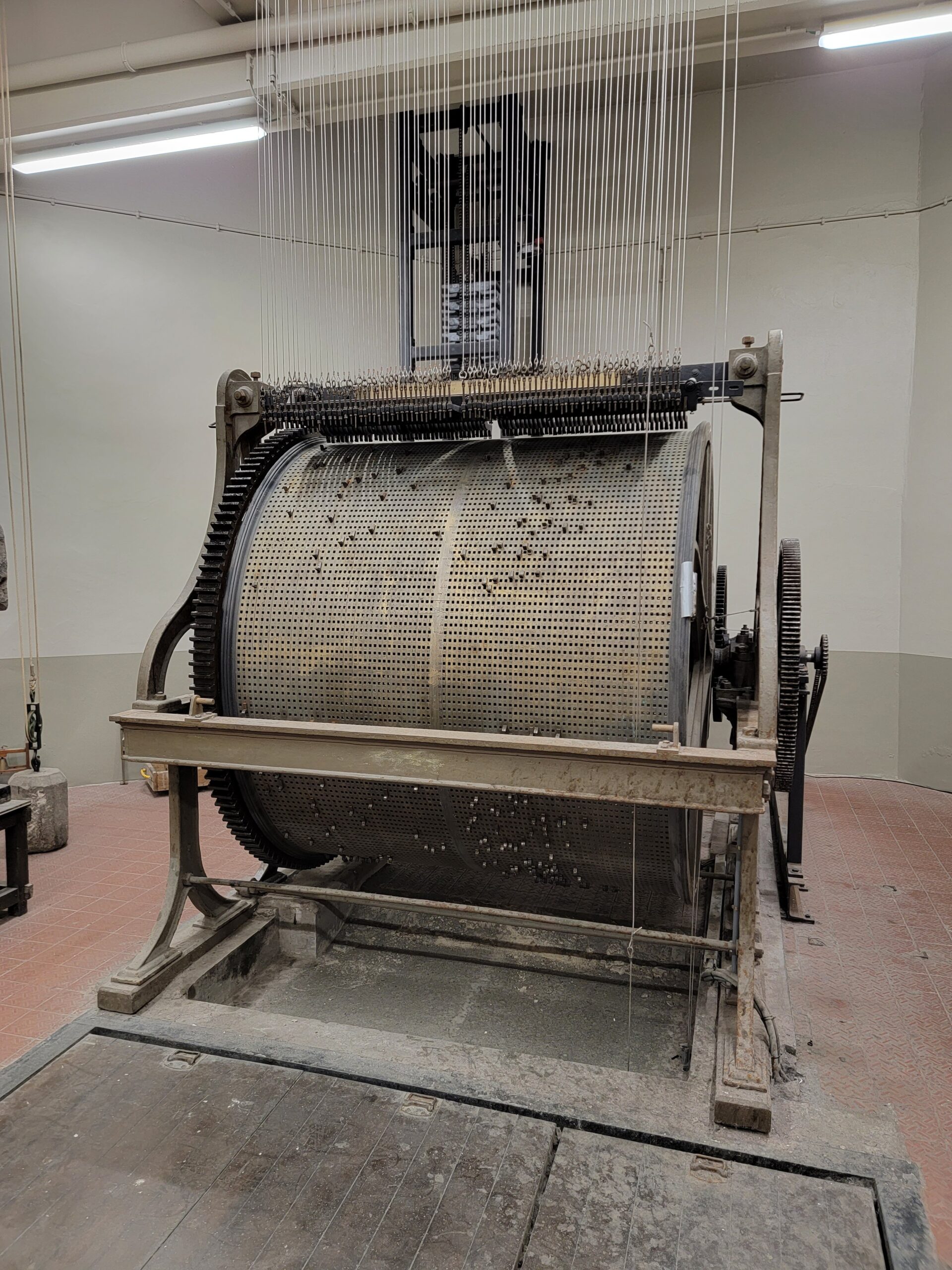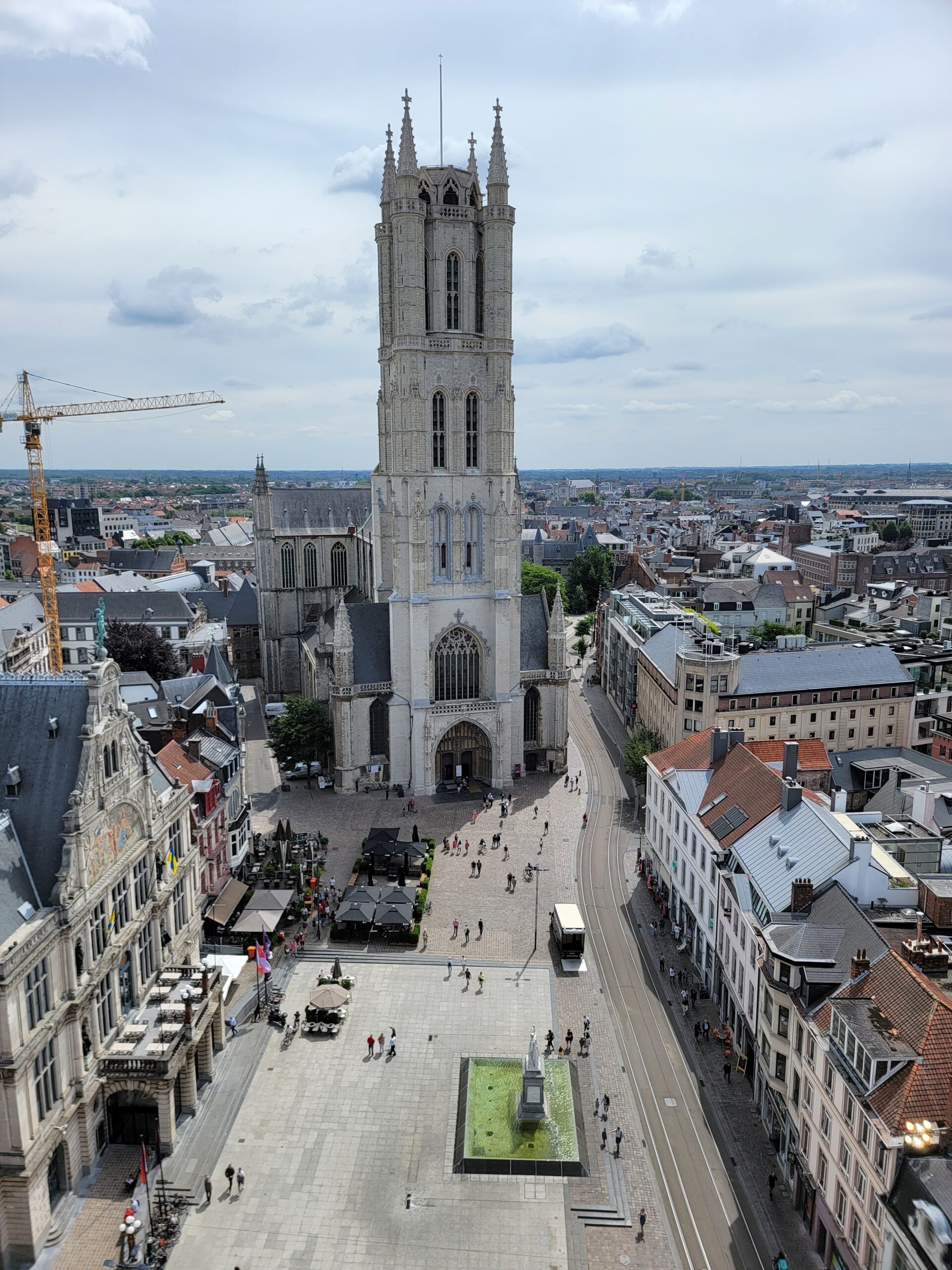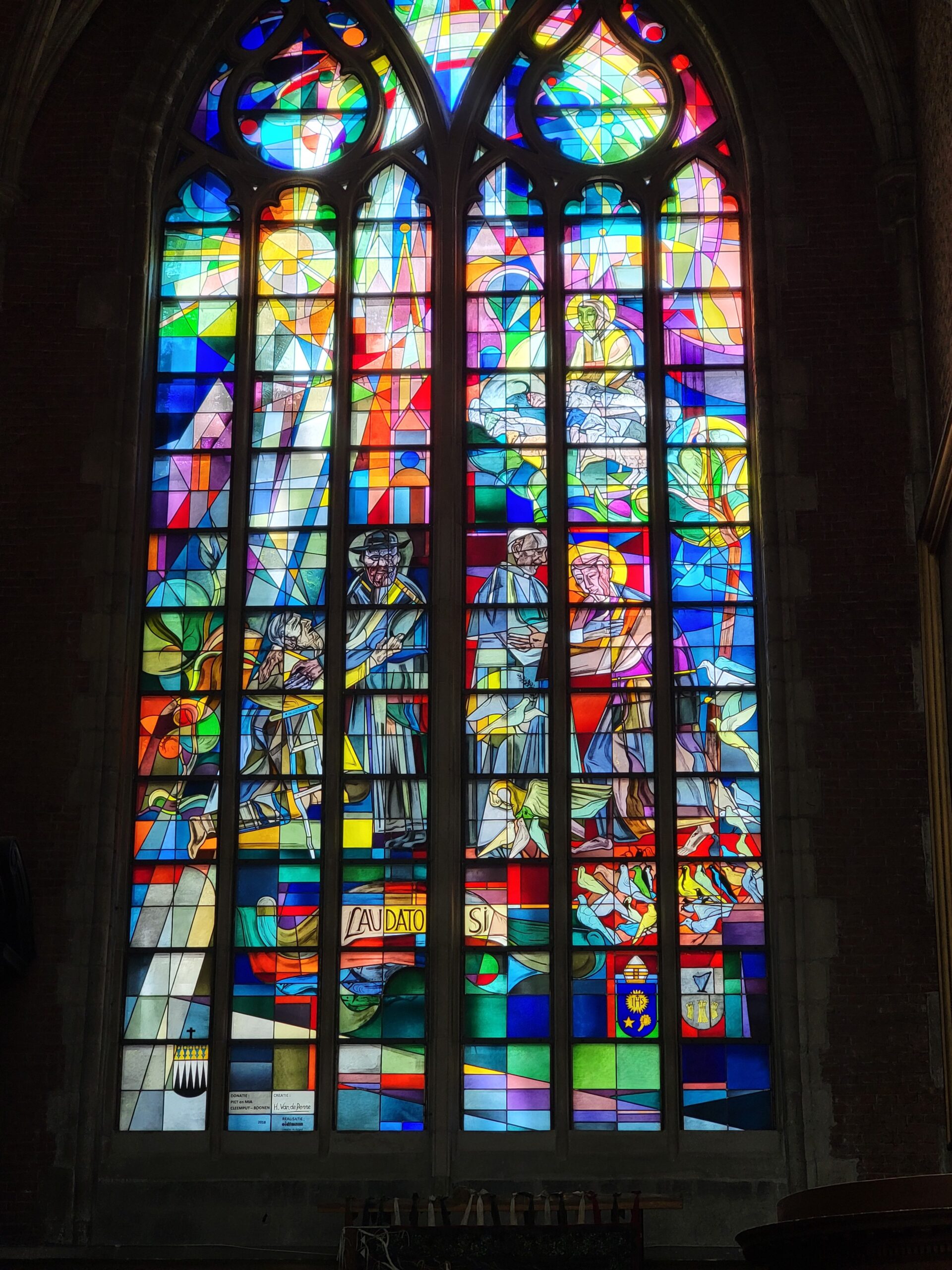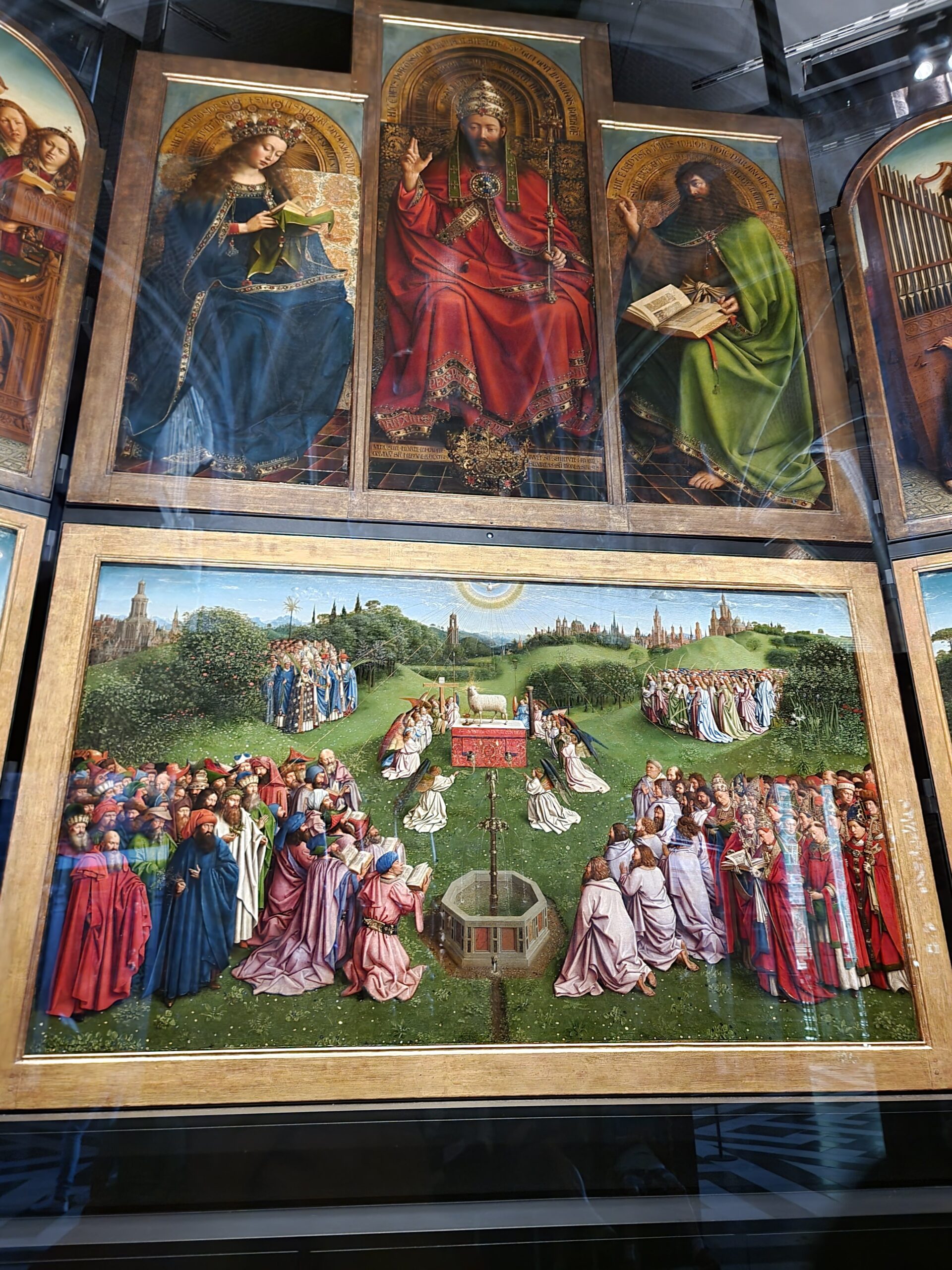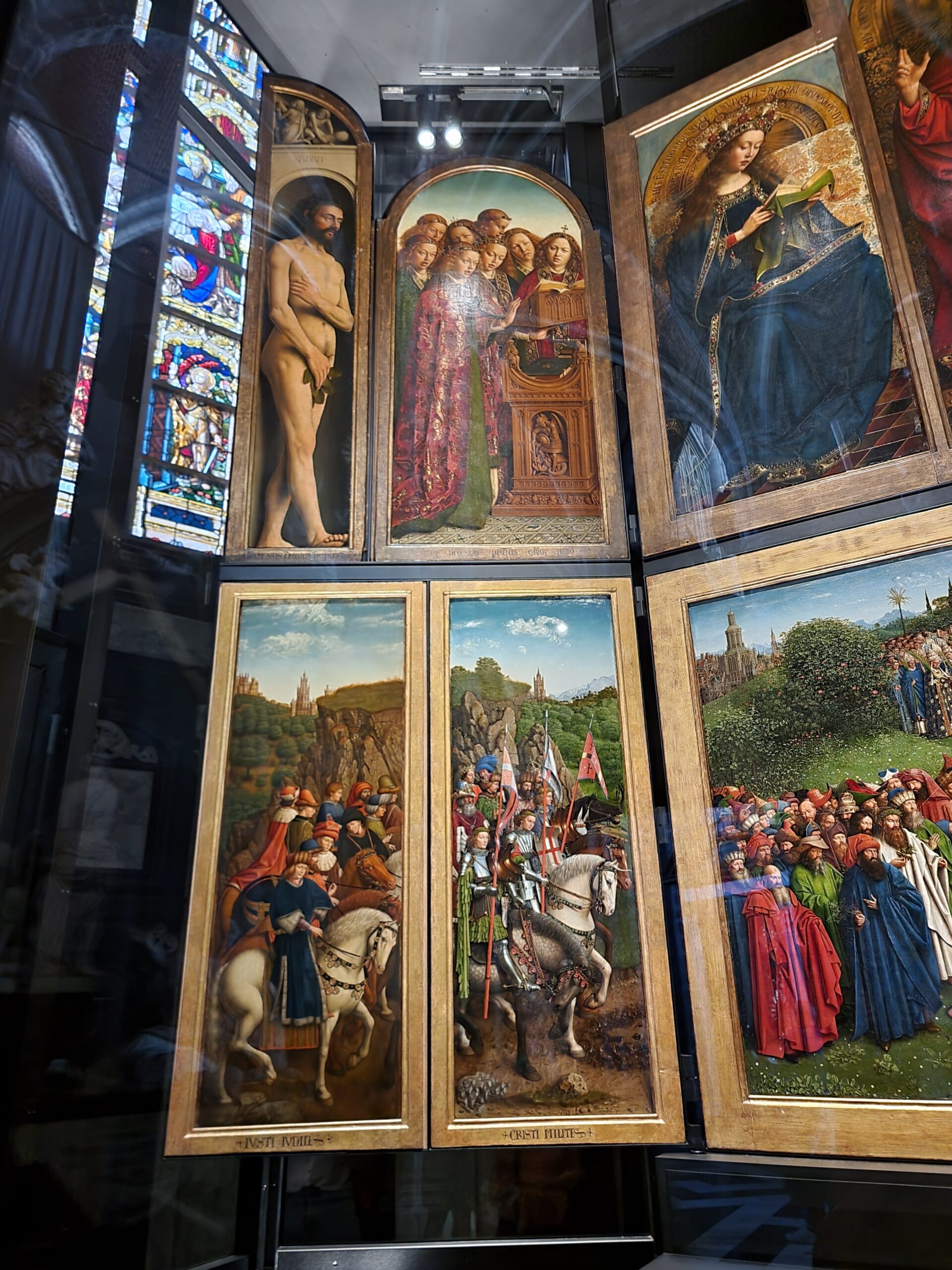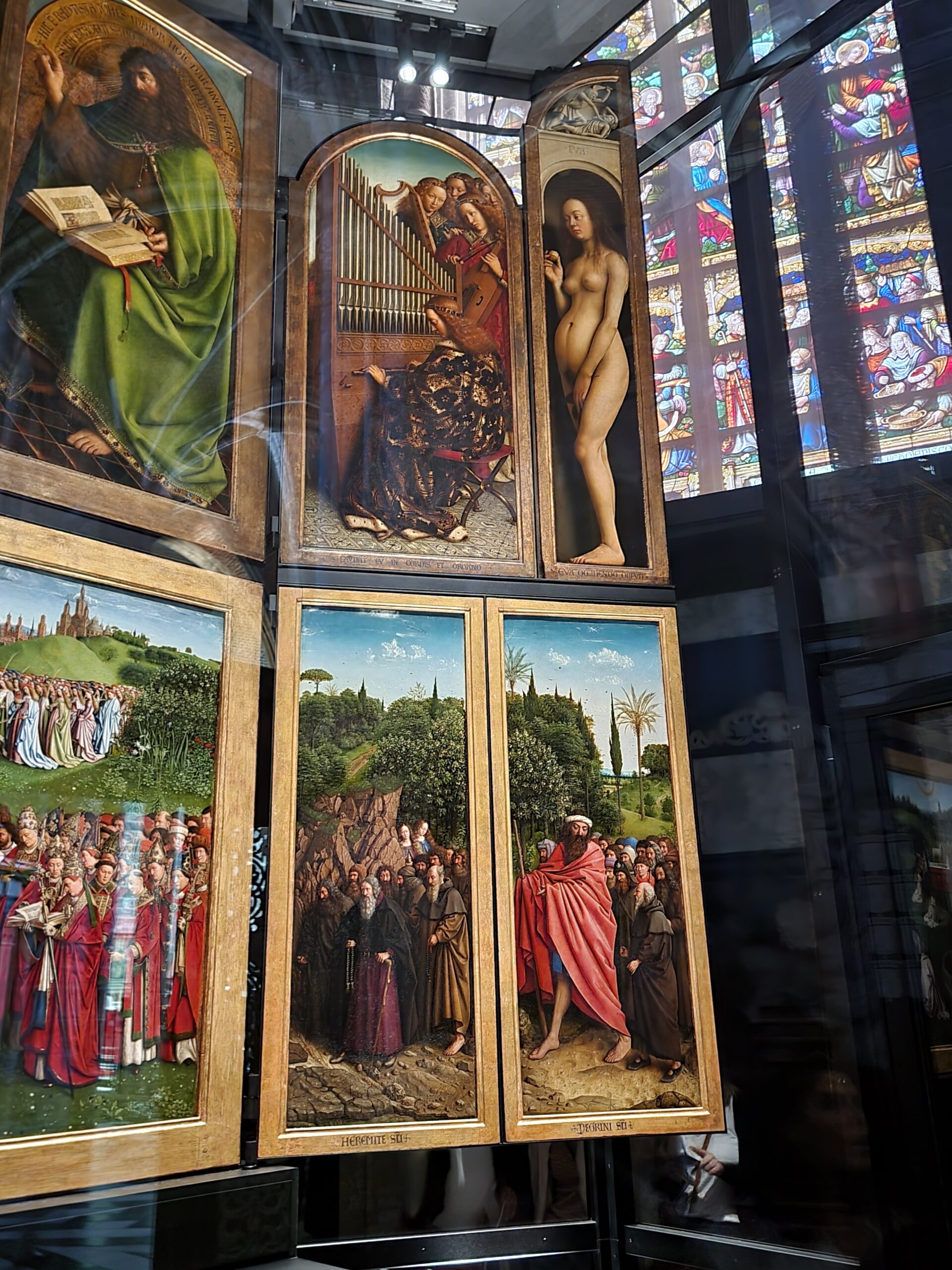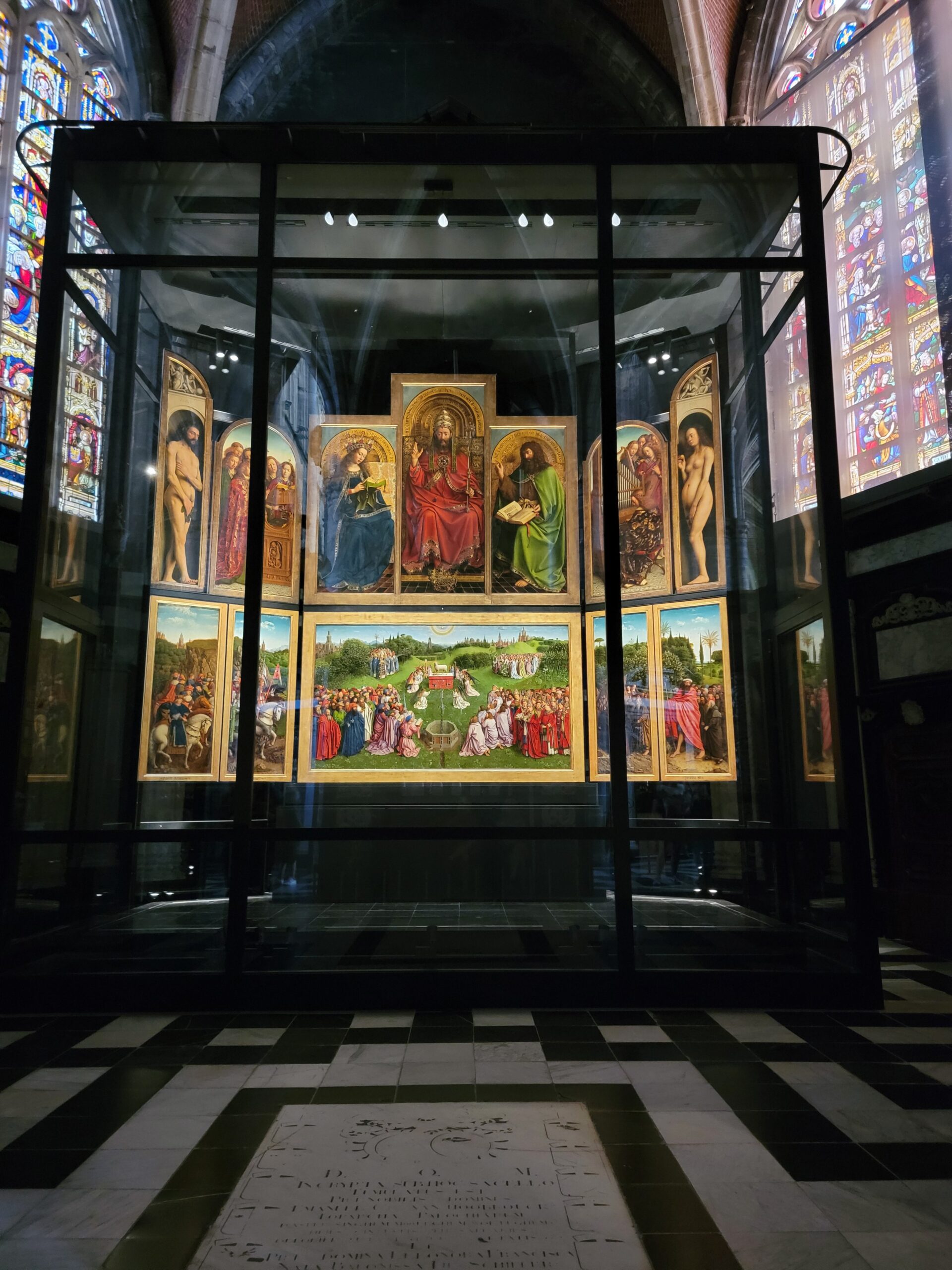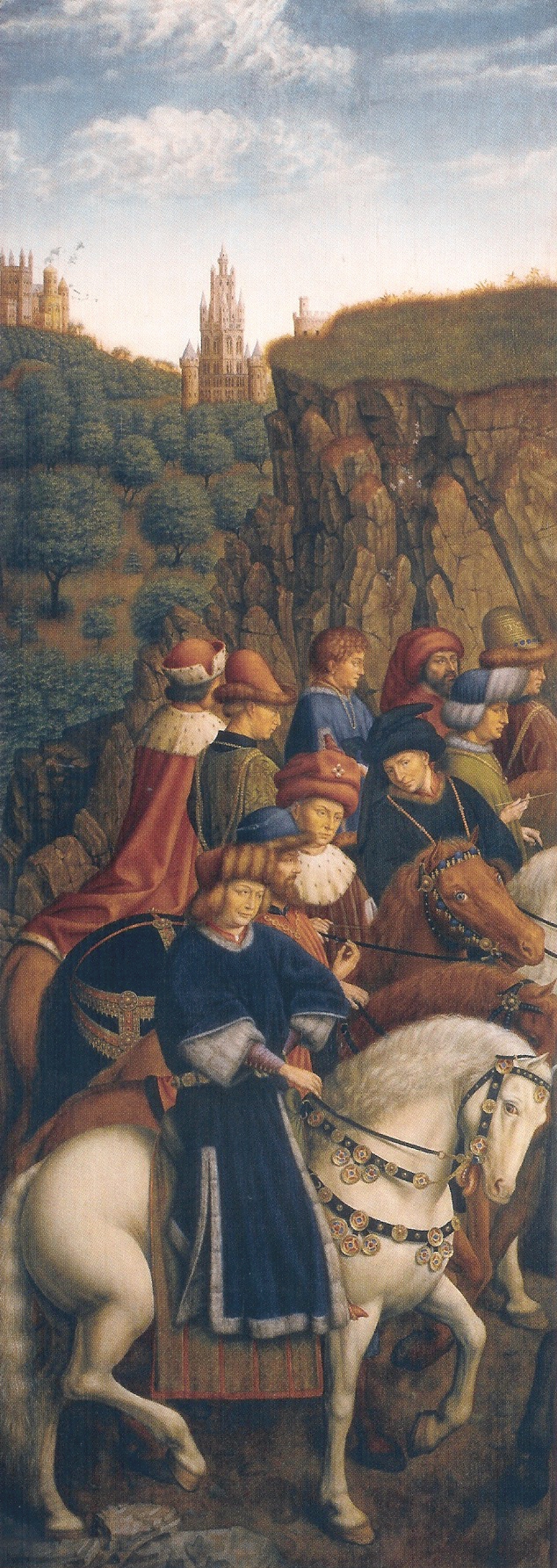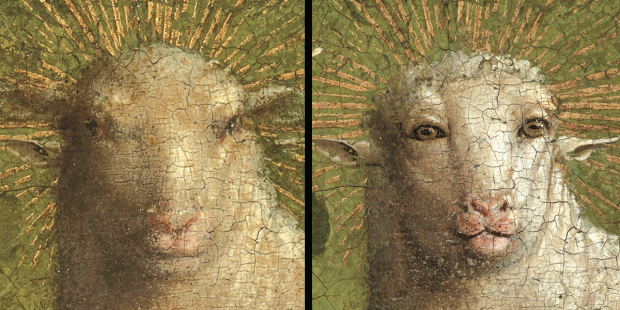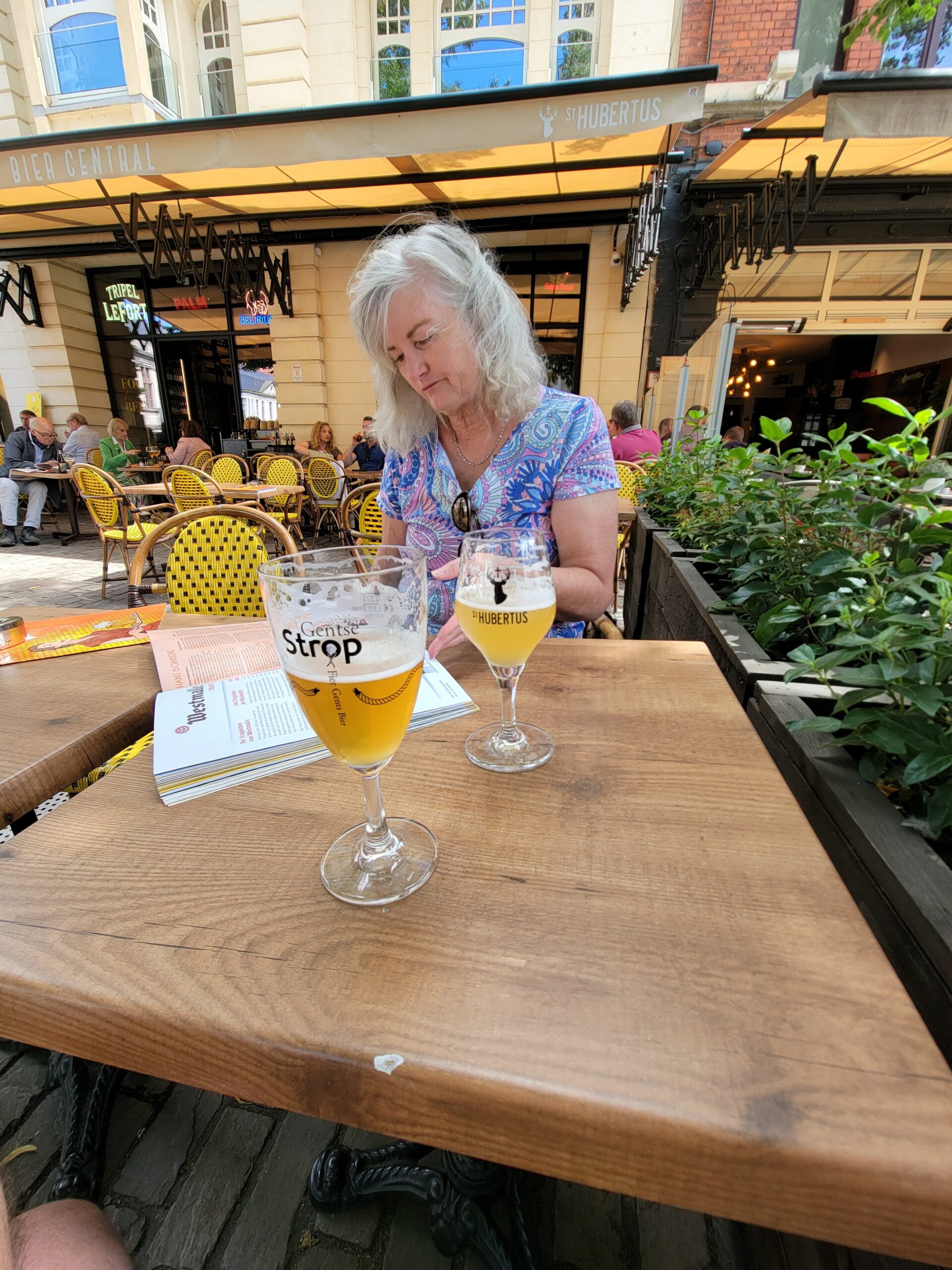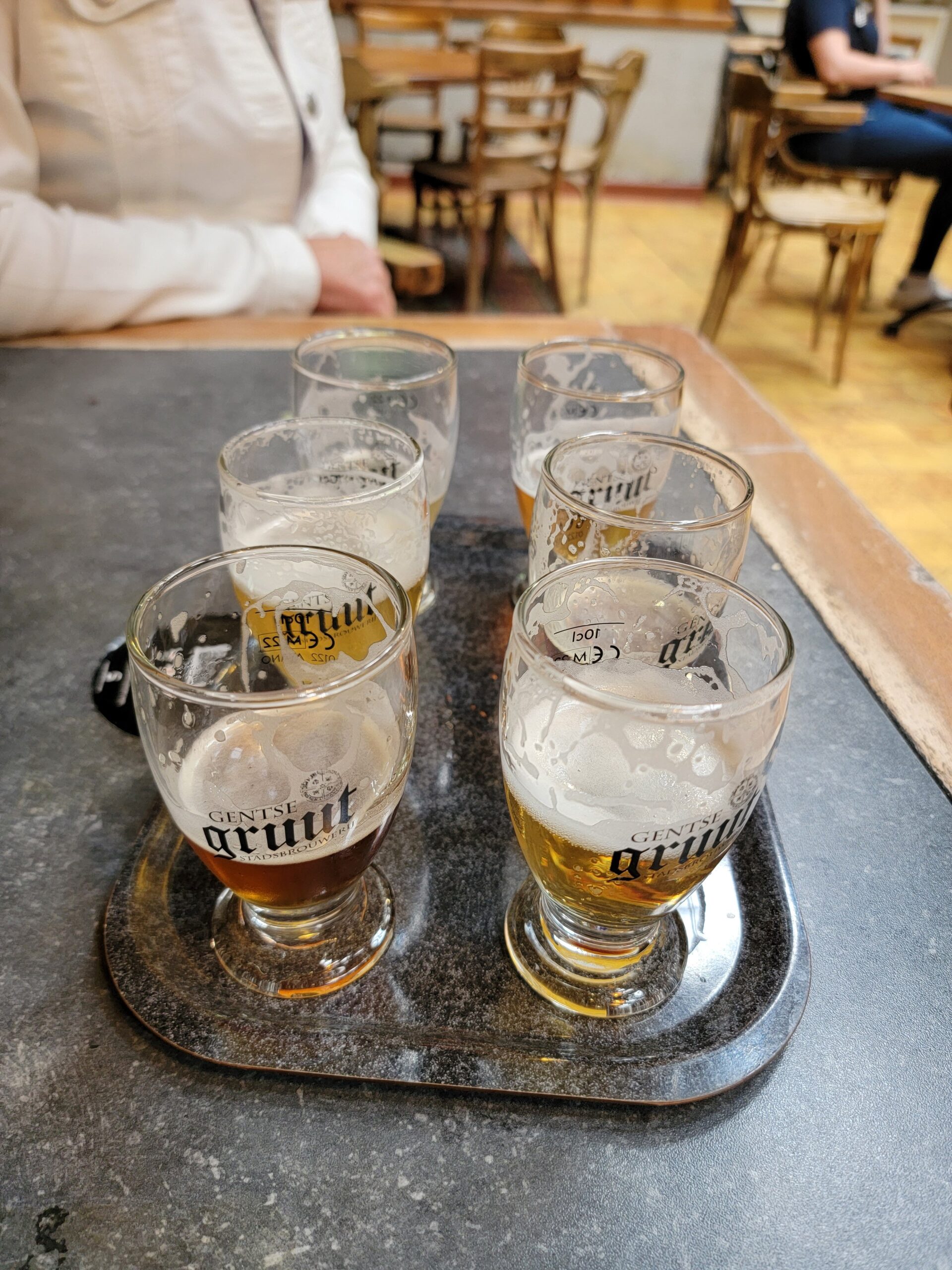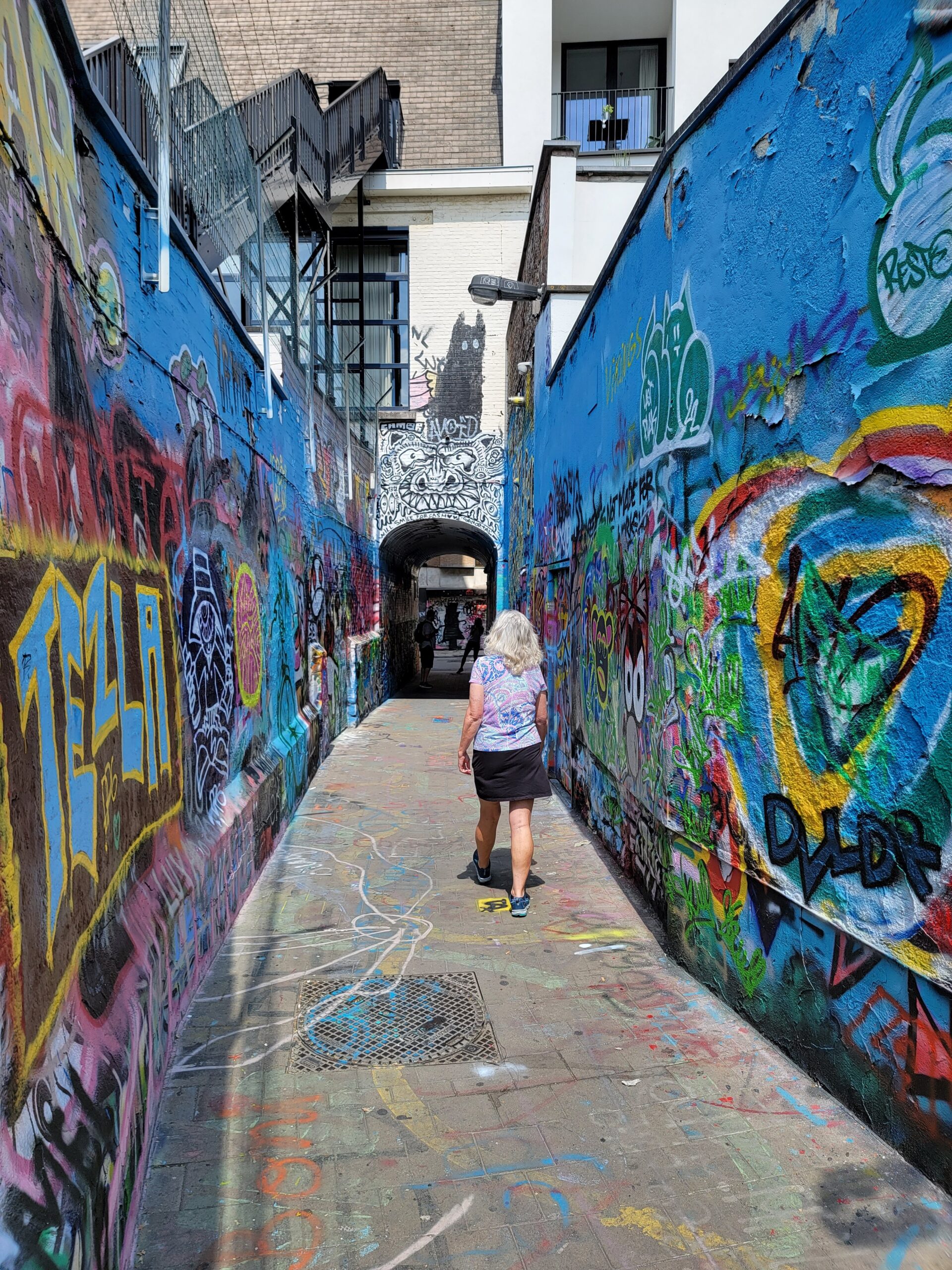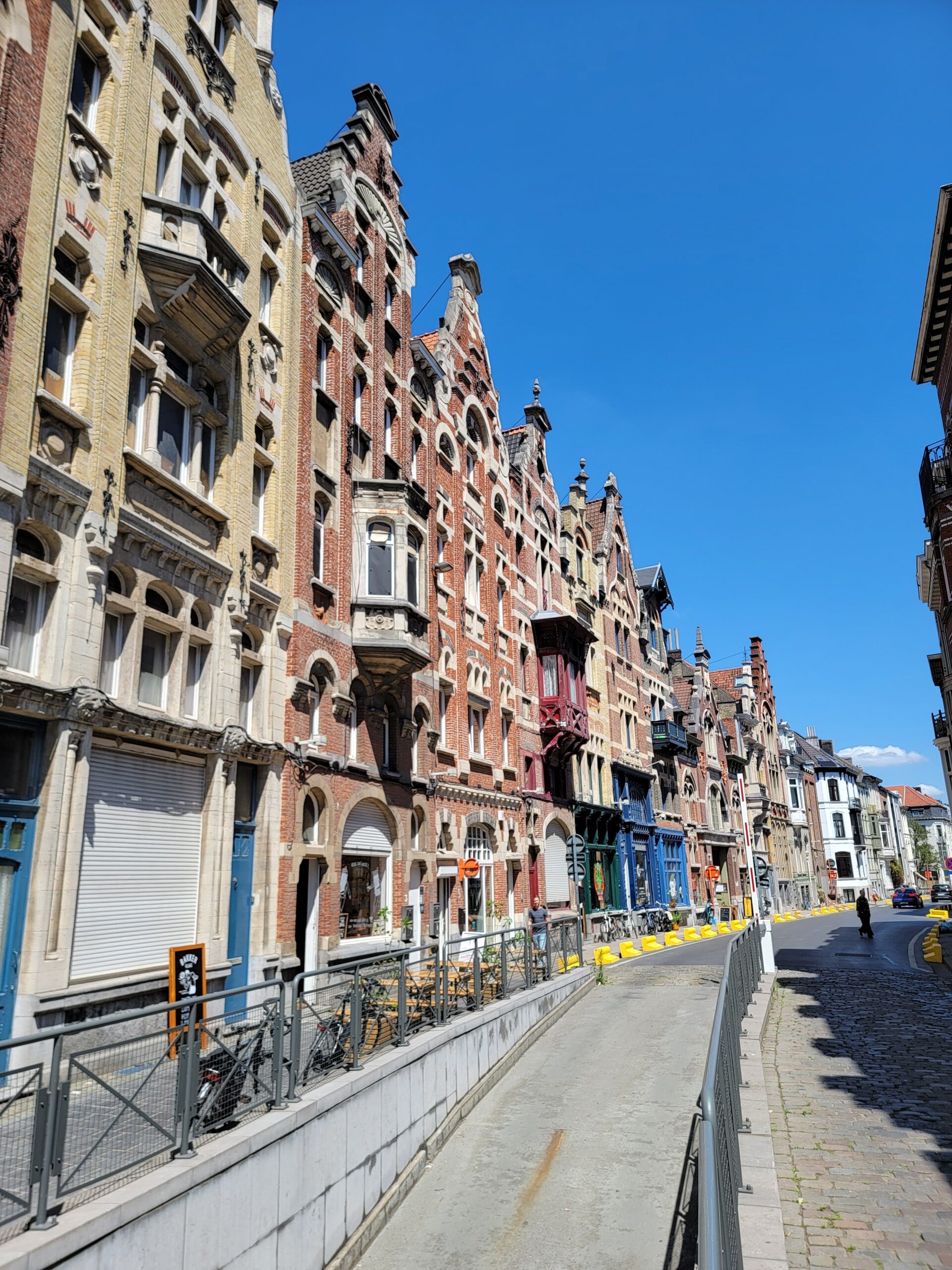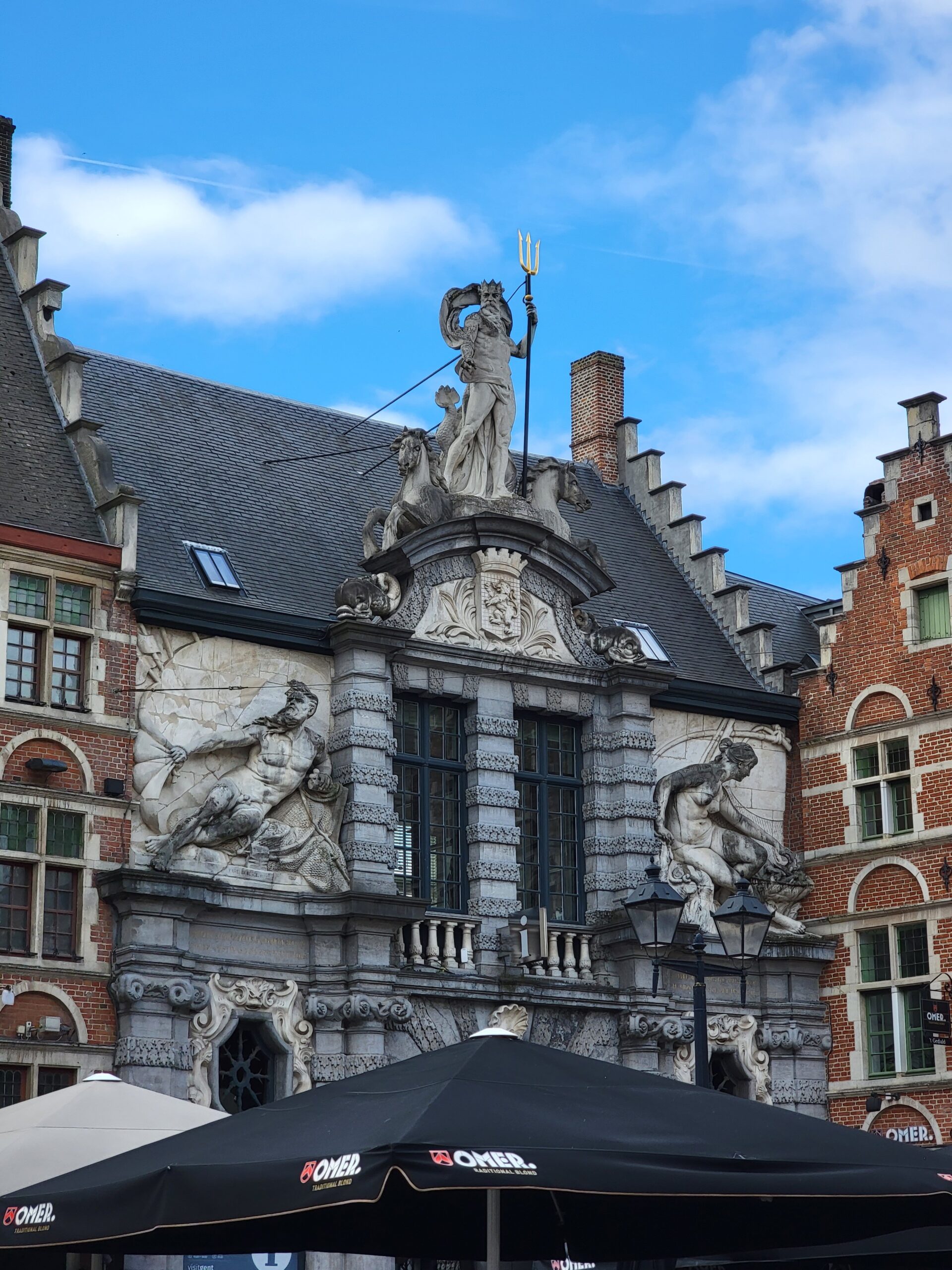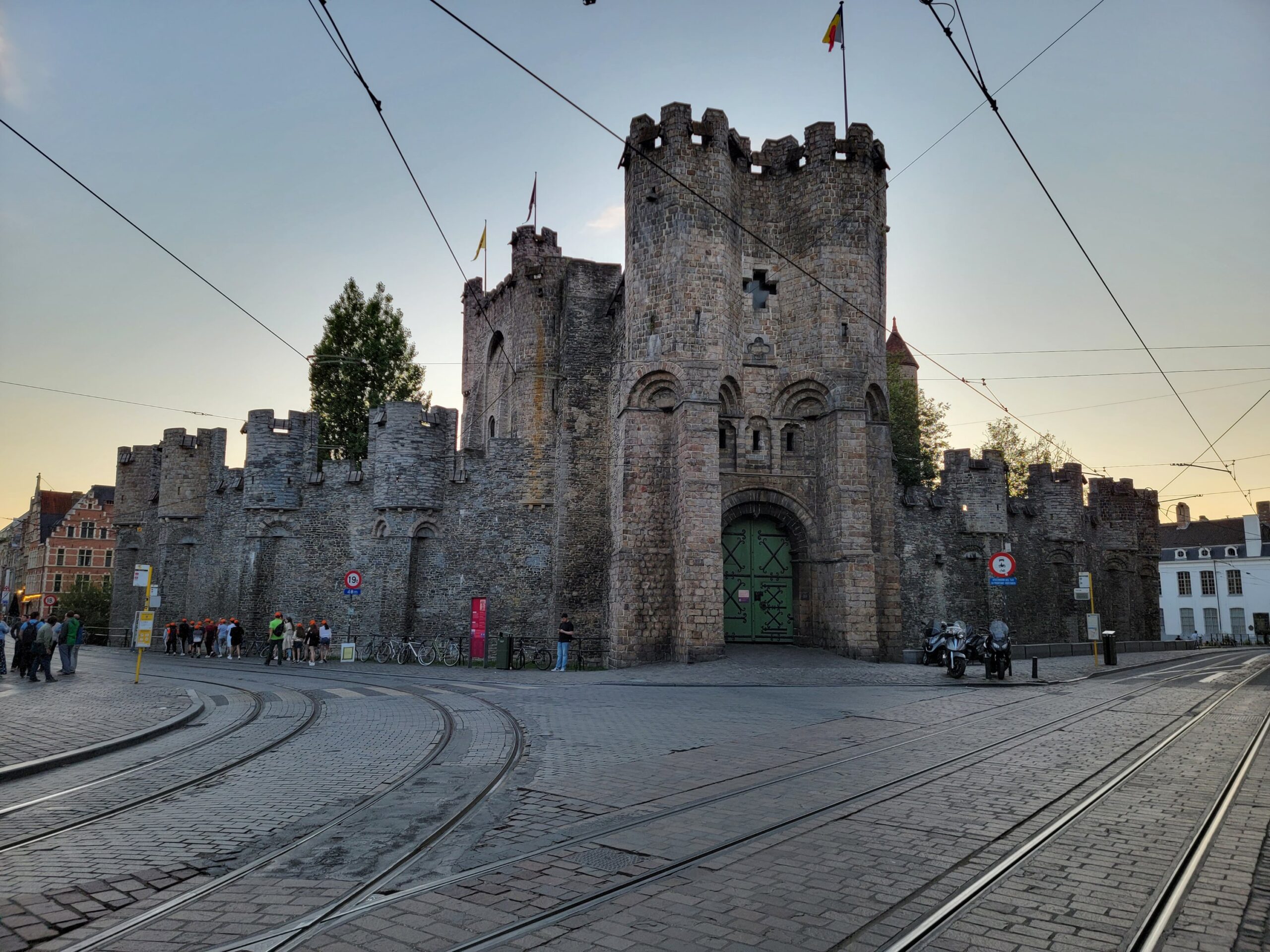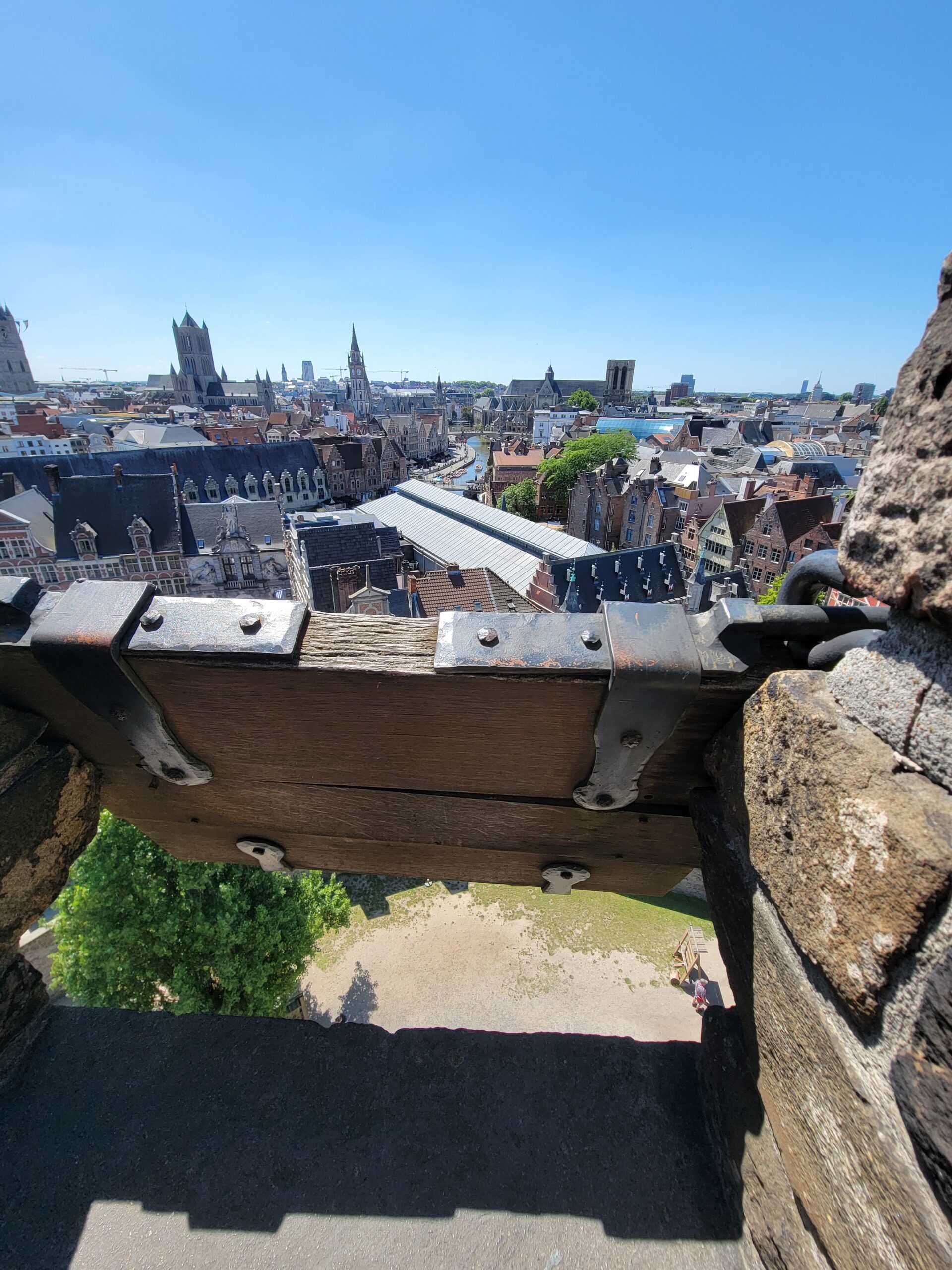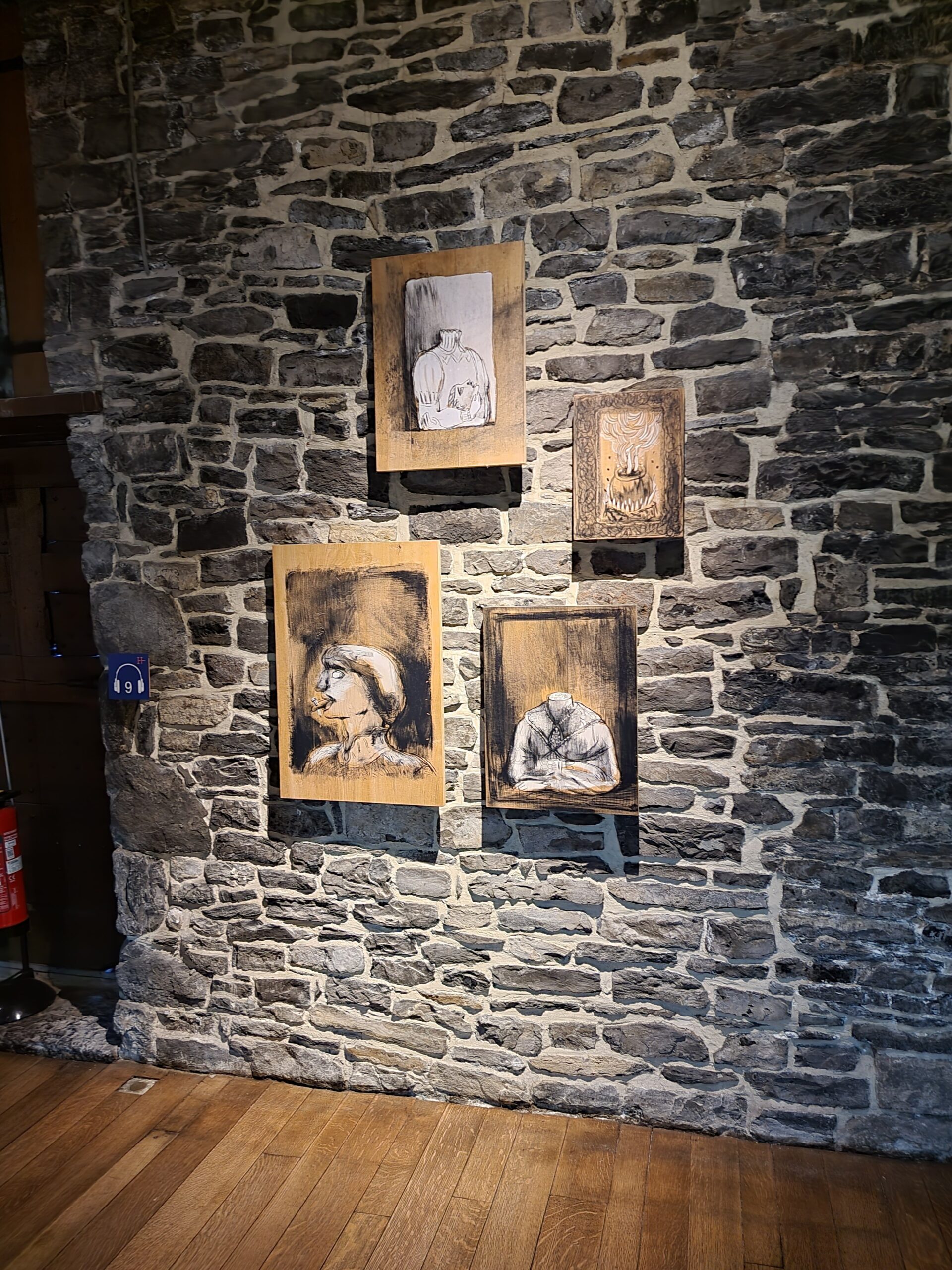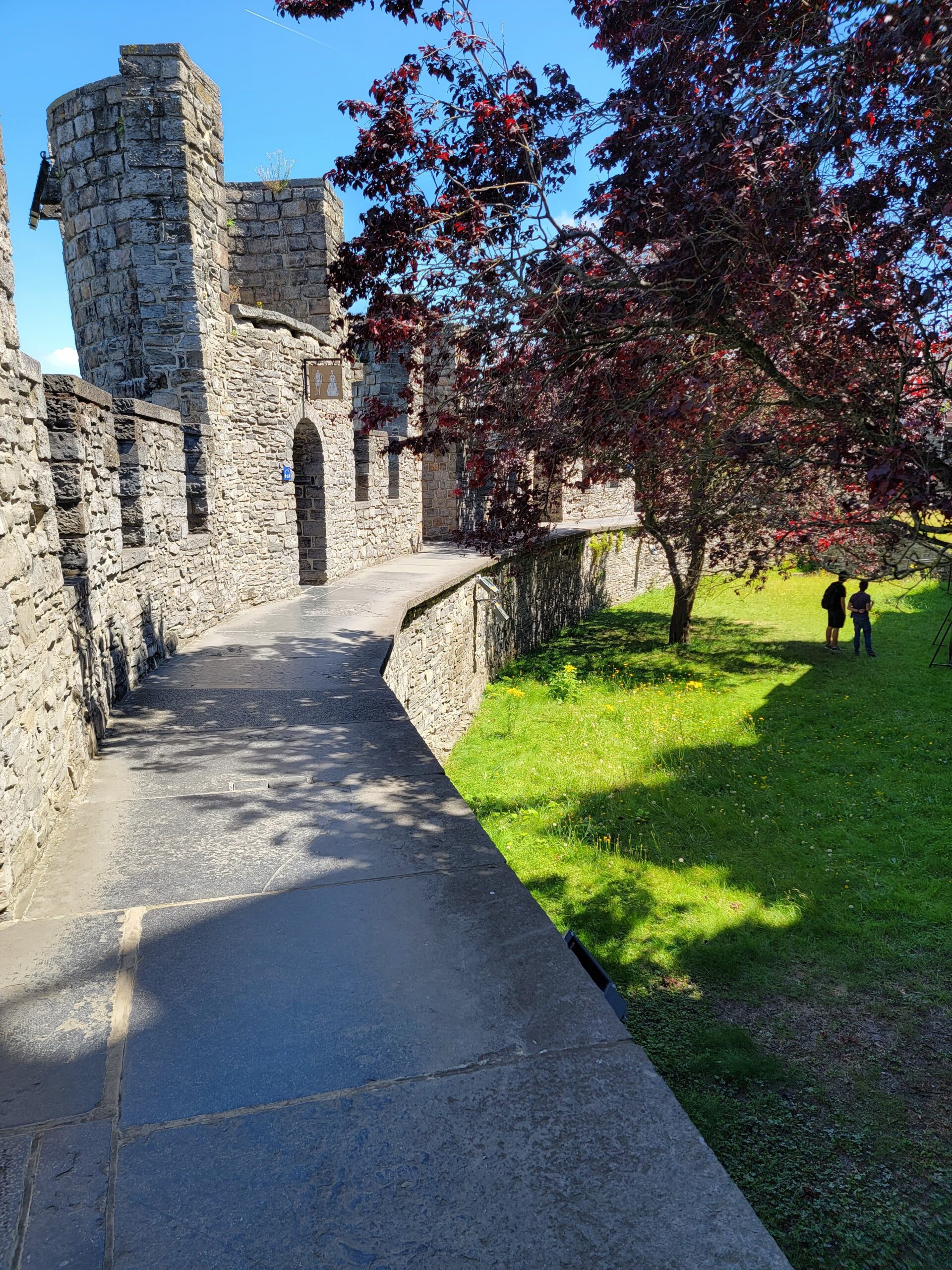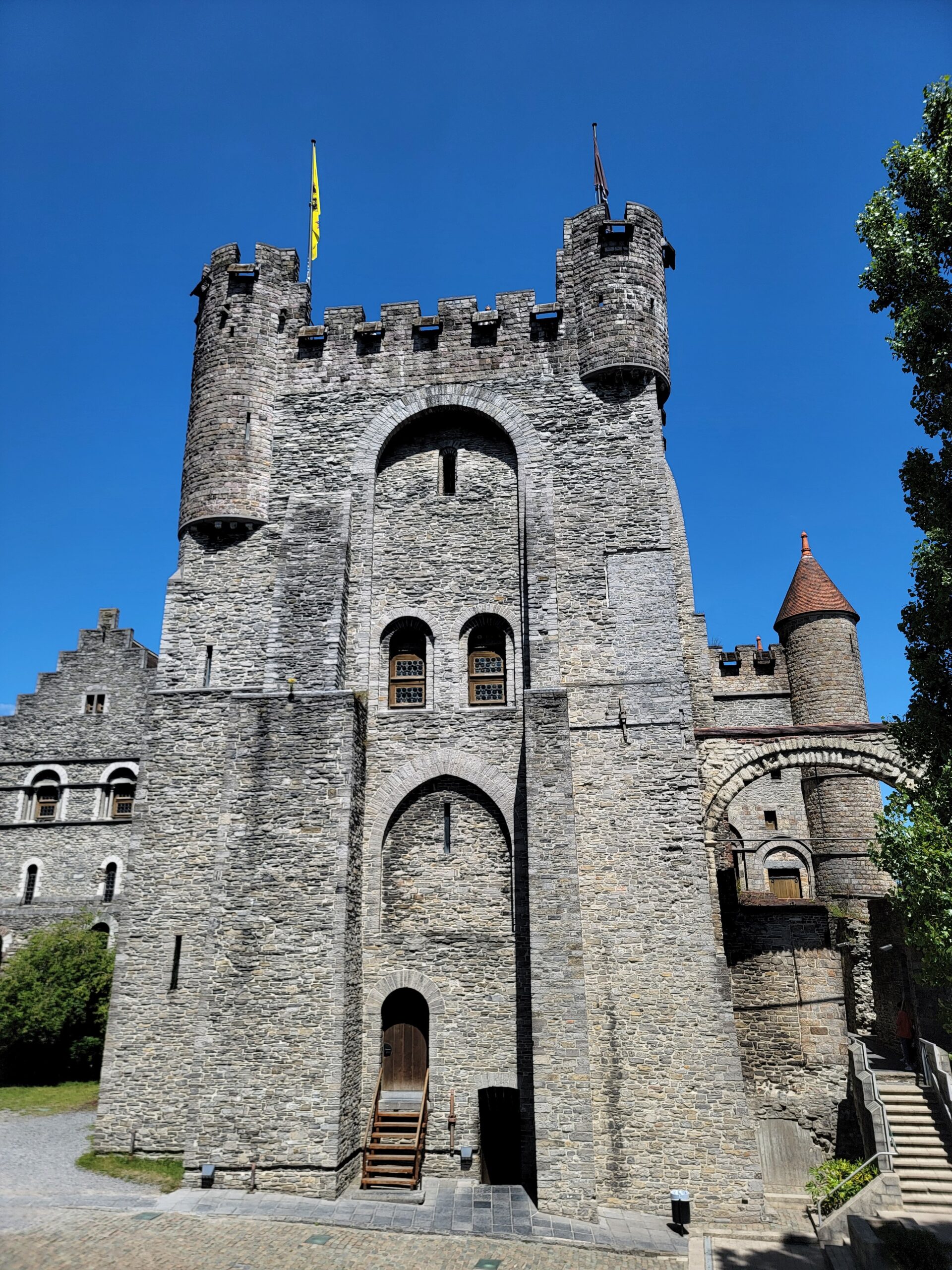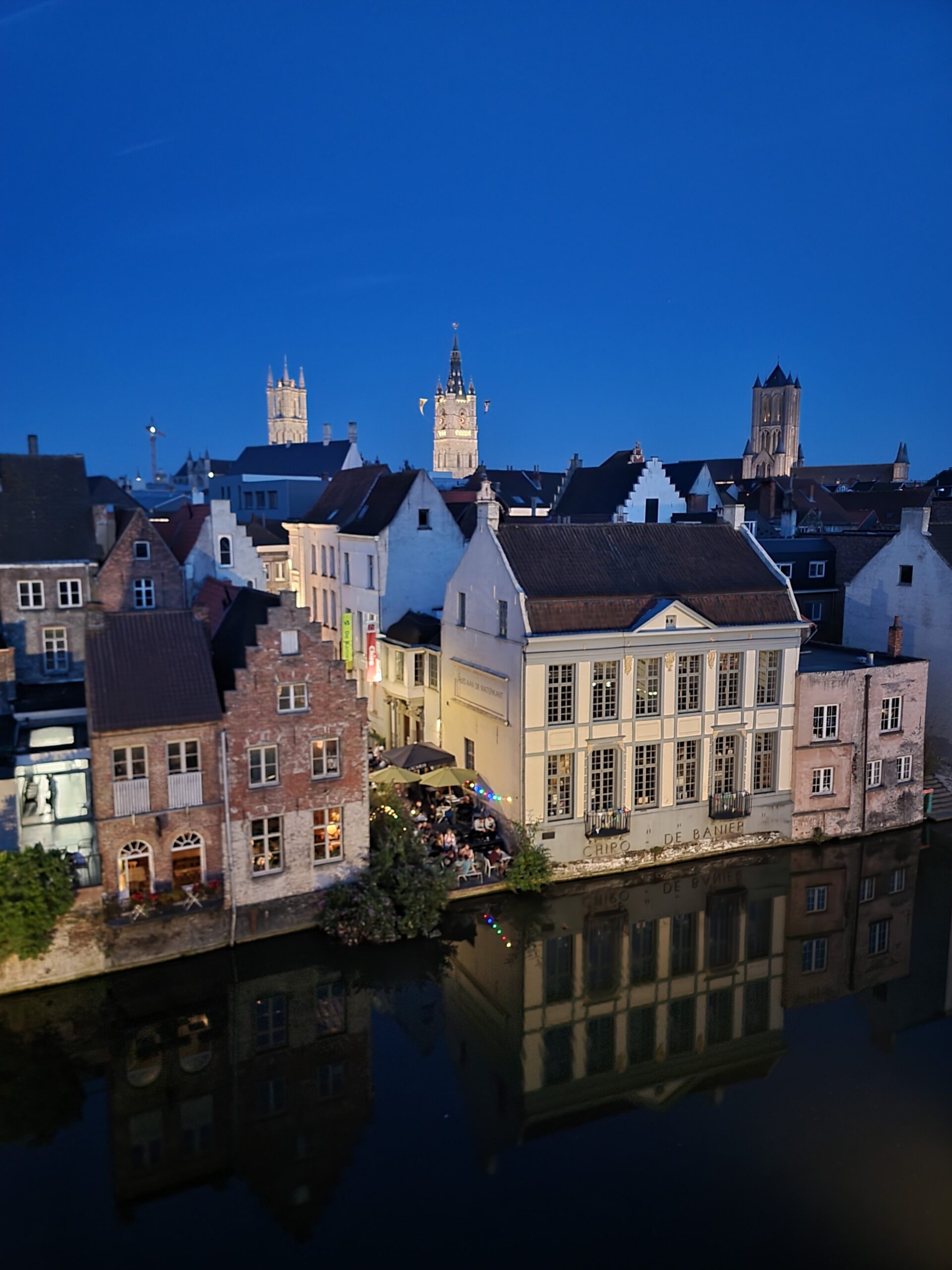I’d read a lot about Ghent being quite similar to Bruges in that it has a lot of older historic buildings and a beautiful central part of town, so we had to add this to our itinerary in Belgium. One thing is certain, while it’s a bigger city than Bruges, it’s nowhere near as touristy. Don’t get me wrong, there are a lot of tourists, but this is a business place first and foremost, at least that’s our impression.
There are several churches that are must visits. I really liked the stained glass windows in Saint Nicholas’ Church.
This is a view of Saint Nicholas’ Church from the nearby Belfort of Ghent.
The Belfort is also a must-do. This one even has an elevator for us old folks to enjoy!
The Belfort was built in the 14th century. It has a playful dragon that was placed at the top in 1377, showing that they had a sense of humor way back then. Here is one of the older dragons they have on display inside the Belfort.
This Belfort, like the one in Bruges, has the large music-box type of drum that plays the bells every 15 minutes.
The view of Saint Bavo’s Cathedral from the top of the Belfort.
I liked this modernistic take on stained glass just inside the entrance.
Saint Bavo’s holds the most important artwork in Belgium, the Ghent Altarpeice, also known as the “Adoration of the Mystic Lamb”, painted by brothers Hubert and Jan van Eyck. It was completed in 1432 and marked the transition from Middle Age to Renaissance art. There is an Augmented Reality tour you can take before seeing the artwork, and I highly recommend it, as it gives you some insight into what you are going to view. The main portion of the piece is first.
The piece has two sides that fold in on the main painting. First the left side, with Adam on the upper left.
Now the right, with Eve on the upper right. If this piece was in California, they’d have to remove those portions so as not to offend somebody. Where is the non-binary transitioning birthing person?
We were super lucky that the place wasn’t crowded at all. I can’t imagine what the crowd would be like if this piece was in the Louvre.
Speaking of the Louvre, this painting has had quite the history. After the French Revolution, this piece was plundered and actually displayed in the Louvre. It was returned to Ghent after the French defeat at Waterloo in 1815.
During WWI the artwork was taken by German forces, only to be returned in 1920 as part of the Treaty of Versailles. In 1934 one panel was stolen and a note in French was left that said “Taken from Germany by the Treaty of Versailles”. That panel has never been found. It was replaced by another artists depiction in 1945, based on old photos of the panel, so if you see this panel in your garage or attic, speak up!
During WWII the Belgians tried to move it to the Vatican, but it was intercepted by the Italians, and in 1942 Hitler ordered it moved to Bavaria. The piece was recovered in a salt mine in 1945 by the Monuments Men, and apparently plays a large role in the 2014 movie, which we have yet to see. Ok, almost done…
In 2020 a major restoration was completed, and using the latest state of the art techniques, they found that during a previous restoration somebody had altered the eyes of the lamb. They were able to remove the alteration, and found that Jan van Eyck had made the eyes humanish, as the lamb is supposed to be a depiction of Jesus.
Had enough about the Lamb of God yet? Us too. Belgian beer time!
My favorite Belgian beer so far was Gruut Bruin. Yum!
This alley is known as Graffiti Street. Nowhere near as cool as the same thing in Boise. It looks like a lot of people have painted right over other “artists”.
The building style here is very typical for older Belgian homes.
I liked this statue of Neptune, pointing down towards the historic Fish Market below. I saw no fish, just restaurants.
Right across the street from the former Fish Market is Castle Gravensteen.
A view from the top of the castle.
They have an audio guide by a comedian that is really quite funny, and well worth listening to. They also have entertaining drawings on the walls. This castle was well known for various forms of torture. Beheadings, boiling somebody alive, and putting a nail in somebodies tongue are depicted here in the room where it all happened. At least it was family friendly!
The path around the walls of the castle.
From the courtyard of the castle. I highly recommend visiting if you find yourself in Ghent!
One last view of the city skyline from our hotel balcony (Hotel Harmony). The hotel provides the perfect location for touring the city, and the staff was excellent!
Up next is our day trip to Ypres so we could visit the WWI battlefields and cemetaries of Flanders Fields.
